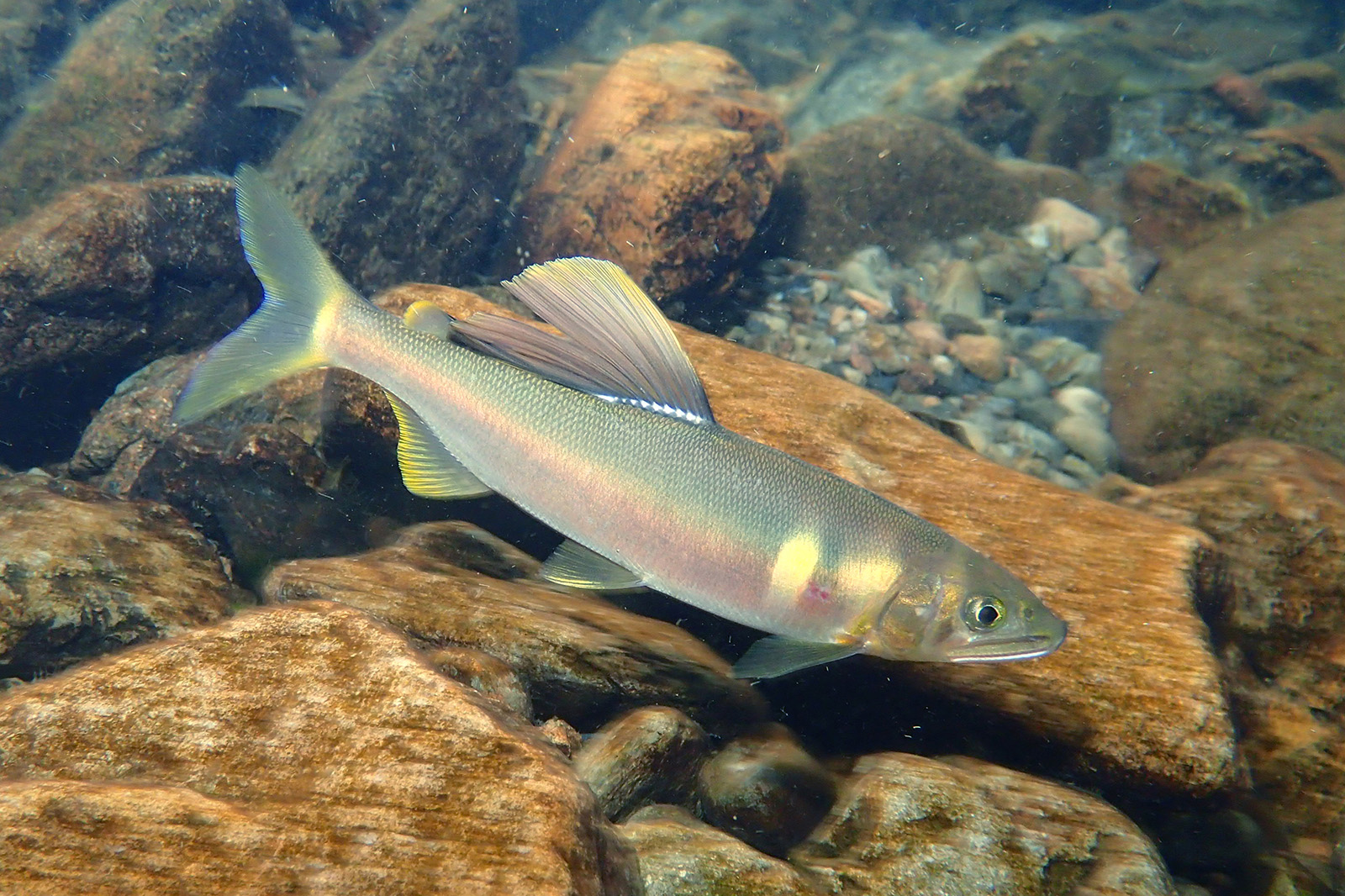
Amami's Rivers
Habitat of Ryukyu Ayu
Habitat of Ryukyu Ayu
Ryukyu Ayu (sweet fish: Plecoglossus altivelis ryukyuensis), an endemic species in Ryukyu (Okinawa) islands extinct in the 1970s in Okinawa Island. Currently, Amami Oshima island is the only place where a natural population exists. It has been speculated, based on a genetic investigation, that Ryukyu Ayu had not had any interaction on the scale of one million years with other Ayu sweetfish (Plecoglossus altivelis altivelis) that inhabit in regions across East Asia and the Japanese Archipelago. This makes Ryukyu Ayu in the same league of rare living witnesses as Amamino Kurousagi (Amami rabbit: Pentalagus furnessi) and Rurikakesu (Lidth’s jay: Garrulus lidthi) to testify Amami Oshima’s unique biogeographical history.
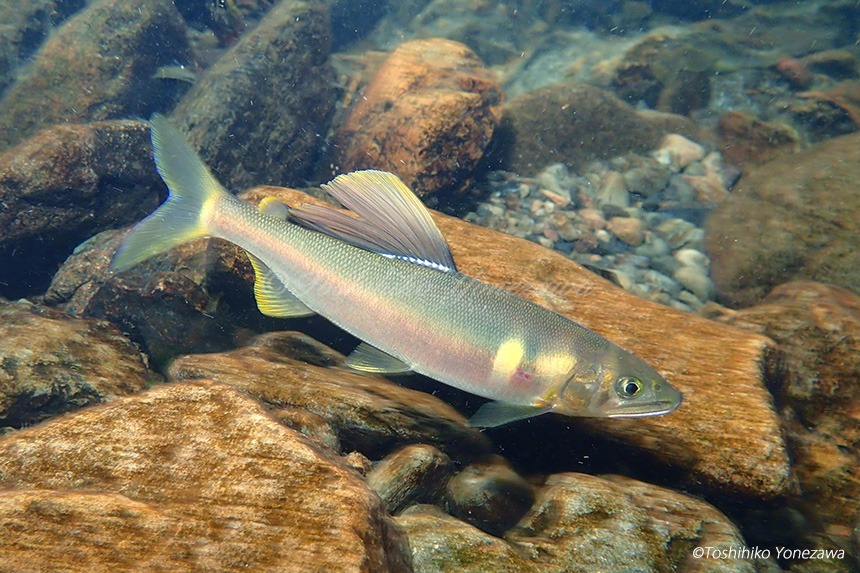
Ryukyu Ayu
The bionomics of Ryukyu Ayu is that of an amphidromous migration. They travel between rivers and the ocean throughout their life span. Normally, in spring, they swim upstream from the ocean, and throughout summer they remain mostly in midstream. They feed on algae adhered to pebbles on the riverbed. Some of them form their own feeding territories, viciously dispersing intruders. The breeding season is generally from late fall to winter. Many prospective parent fish, exhibiting their nuptial coloration, begin to congregate around rapids in downstream, which is less susceptible to the effect of salt and tides. Normally the spawning is carried out right before or after the sunset. One female sweetfish, supported by two male fish side by side, buries her body into the sand for a few seconds to lay eggs, and then the male deposit milt over the eggs. After spawning, many of the parent fish complete their short one-year life span, but a few of them do survive through the winter. The eggs laid on the sand hatch after about ten days, and the juvenile fish are immediately swept into the ocean. The warm seawater (above 20°C) is crucial for the larva, risking the homeostasis of its bodily fluids. Thus, those juveniles spend the first winter in tidal flats near estuaries or around beaches with low water temperature and little impact of salt.
Ryukyu Ayu, called “Yaji” on Amami Oshima, used to be consumed by the islanders. At present, the Kagoshima Prefecture Ordinance prohibits locals from harvesting them. Meanwhile, in recent years, Ryukyu Ayu is used as a teaching material for the environmental education at local primary and secondary schools.
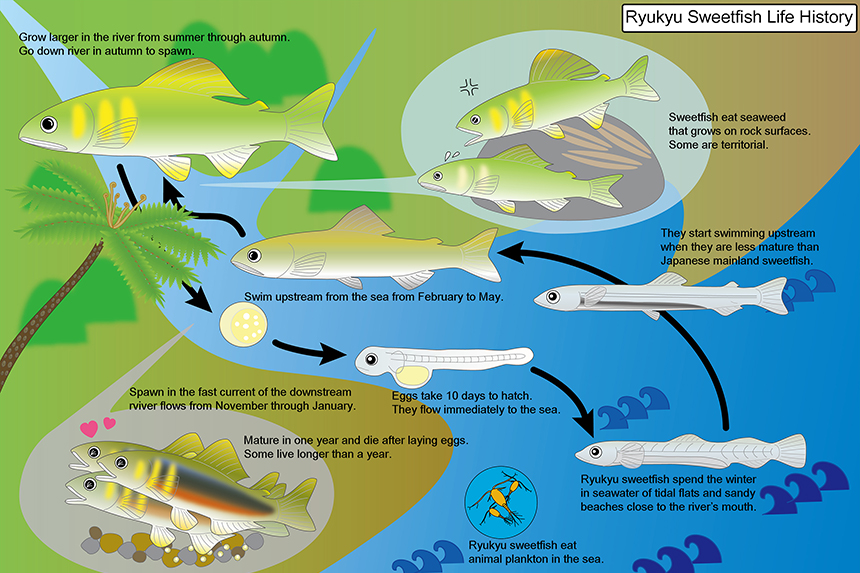
Bionomics of Ryukyu Ayu
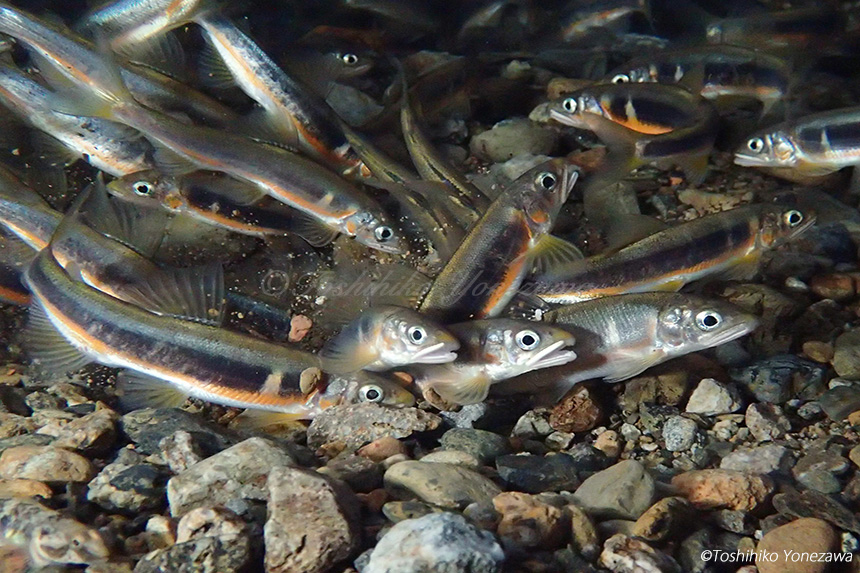
egg-laying Ryukyu Ayu
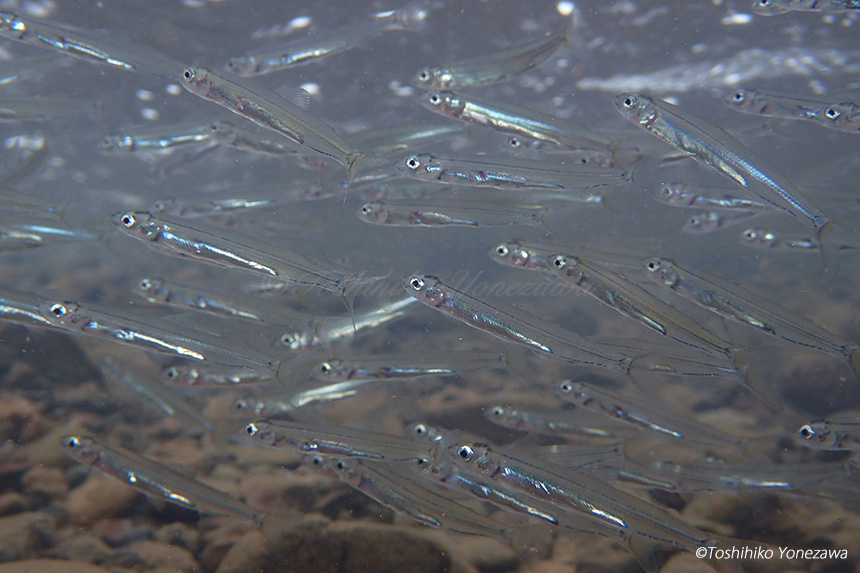
upstream migration of Ryukyu Ayu
Text, Photos, Illustration by Toshihiko Yonezaw


